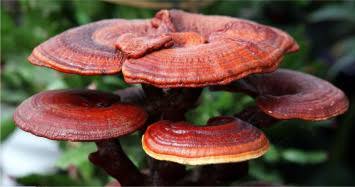Ganoderma - an ancient Asian health remedy
Lingzhi has been recognized as a medicinal mushroom for over 2000 years, and its powerful effects have been documented in ancient scripts (Wasser 2005). The first book wholly devoted to the description of herbs and their medicinal value was Shen Nong Ben Cao Jing, written in the Eastern Han dynasty of China (25-220 AD). This book is also known as “Classic of the Materia Medica” or “Shen-nong’s Herbal Classics.” It describes botanical, zoological, and mineral substances, and was composed in the second century under the pseudonym of Shen-nong (“the holy farmer”; Zhu, 1998). The book, which has been continually updated and extended, describes the beneficial effects of several mushrooms with a reference to the medicinal mushroom G. lucidum (Zhu, 1998; Upton 2000; Sanodiya et al. 2009). In the Supplement to Classic of Materia Medica (502-536 AD) and the Ben Cao Gang Mu by Li Shin-Zhen, which is considered to be the first pharmacopoeia in China (1590 AD; Ming dynasty), the mushroom was attributed with therapeutic properties, such as tonifying effects, enhancing vital energy, strengthening cardiac function, increasing memory, and antiaging effects. According to the State Pharmacopoeia of the People’s Republic of China (2000), G. lucidum acts to replenish Qi, ease the mind, and relieve cough and asthma, and it is recommended for dizziness, insomnia, palpitation, and shortness of breath.




